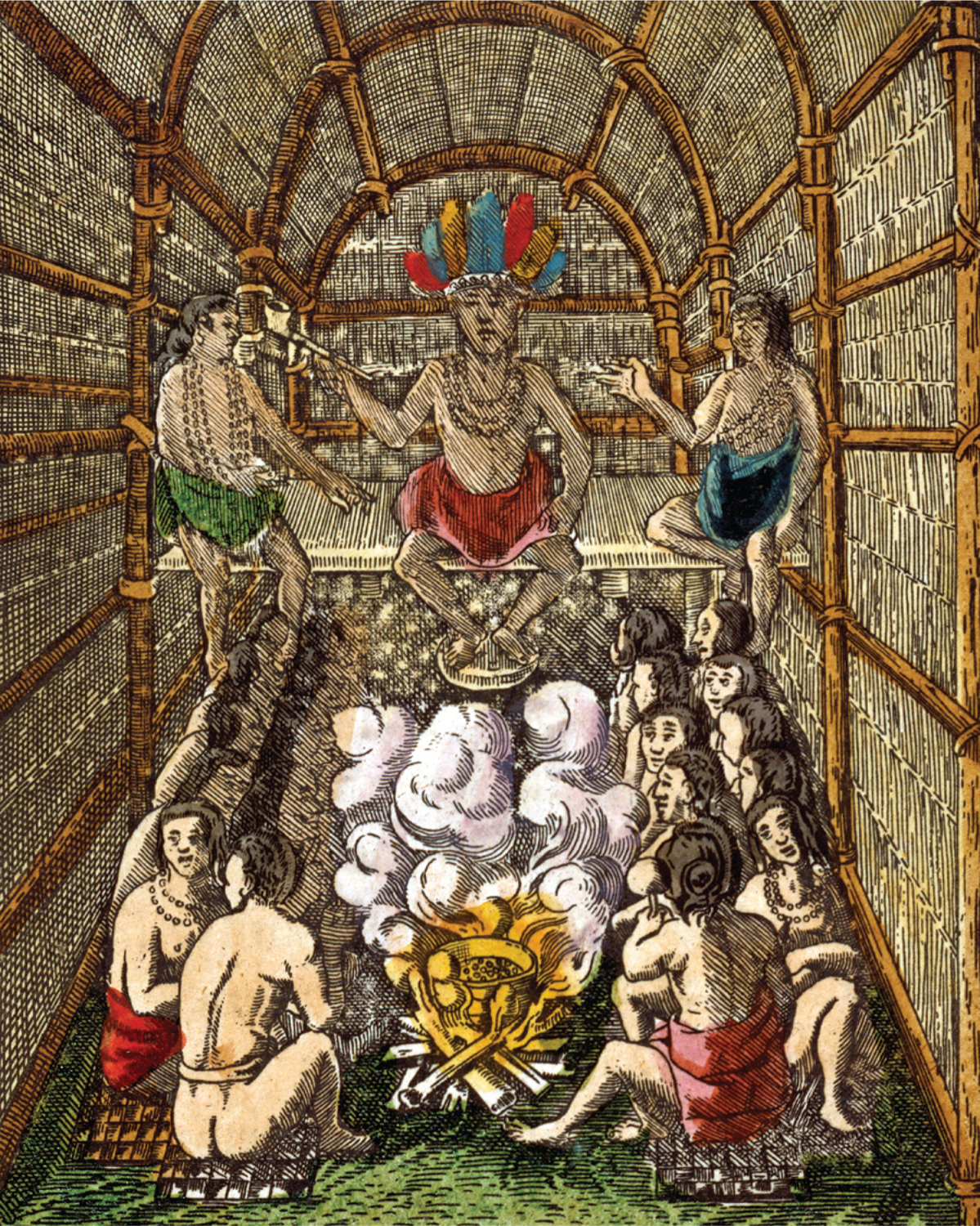The Fragile Jamestown Settlement
Although Spain claimed all of North America under the 1494 Treaty of Tordesillas (see “The Explorations of Columbus” in chapter 2), King James believed that England could encroach on the outskirts of Spain’s New World empire. An influential proponent of colonization claimed that “God hath reserved” the lands “lying north of Florida” to be brought “unto Christian civility by the English nation.” In effect, the king acted upon this claim by granting to the Virginia Company, a joint-
English merchants had pooled their capital and shared risks for many years by using joint-
In December 1606, the ships Susan Constant, Discovery, and Godspeed carried 144 Englishmen toward Virginia. A few weeks after they arrived at the mouth of Chesapeake Bay on April 26, 1607, they went ashore on a small peninsula in the midst of the territory ruled by Powhatan and quickly built a fort, the first building in Jamestown. The fort showed the colonists’ awareness that they needed to protect themselves from Indians and Spaniards. Spanish plans to wipe out Jamestown were never carried out. Powhatan’s people, however, defended Virginia as their own. For weeks, the settlers and Powhatan’s Algonquian warriors skirmished repeatedly. English firearms repelled Indian attacks, but the Indians’ superior numbers and knowledge of the wilderness made it risky for settlers to venture far beyond the fort.

The settlers soon confronted invisible dangers: disease and starvation. Saltwater and fresh-
Powhatan’s people came to the rescue of the weakened and demoralized Englishmen. Early in September 1607, they began to bring corn to the colony for barter. Accustomed to eating food derived from wheat, English people considered corn the food “of the barbarous Indians which know no better . . .
It is difficult to exaggerate the fragility of the early Jamestown settlement. One colonist lamented that “this place [is] a meere plantacion of sorrowes and Cropp of trobles, having been plentifull in nothing but want and wanting nothing but plenty.” When a new group of colonists arrived in 1610, they found only 60 of the 500 previous settlers still alive. The Virginia Company sent hundreds of new settlers to Jamestown each year, each of them eager to find the paradise promised by the company. But most settlers went instead to early graves.